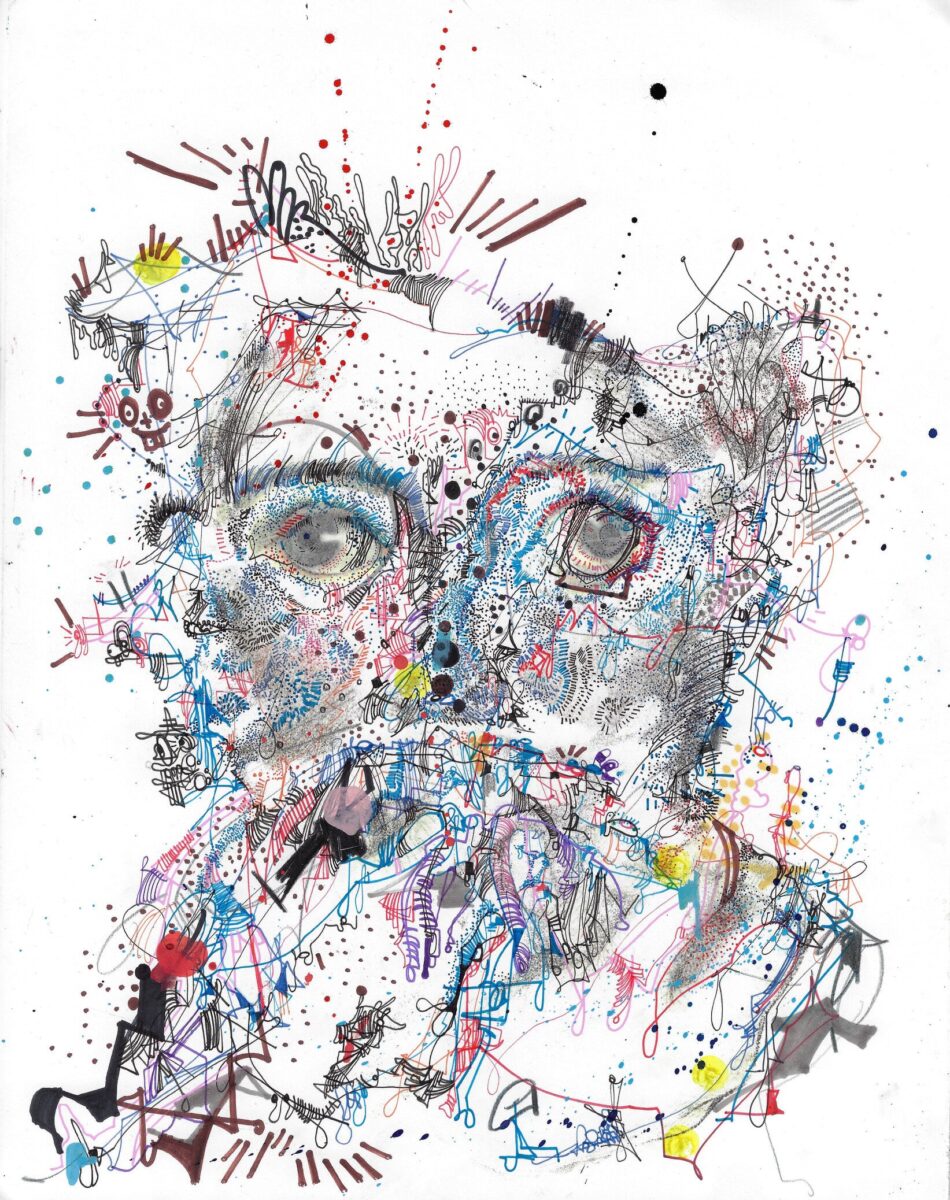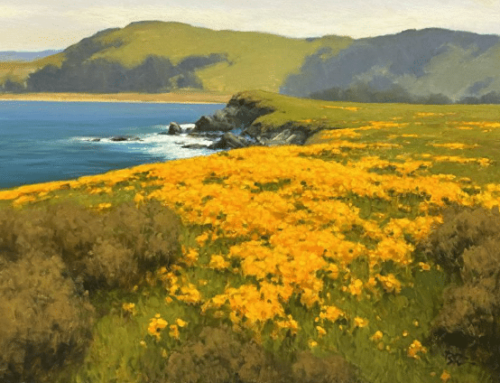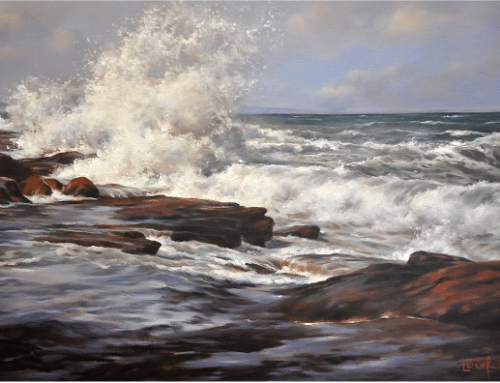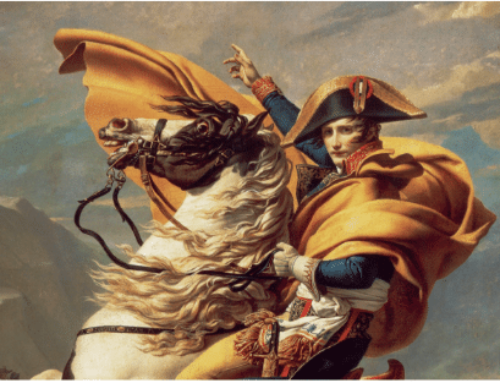A Guest Post By Michael Alan
Endless lines, spaces splashing! Overlapping multiple viewing positions!
The center where all people can enter and come and go as they want.
Art is freedom!
With its vocation in breaking down separation barriers.
Channeling happiness, releasing all forms of emotion, creating all forms of emotion.
Channeling the mind to go beyond the impulse need.
The paper/canvas/poem/song/sculpture/show and on is the emotional reader.
The space where man and woman leave for moments in time to return again and again and again.
Art is freedom!
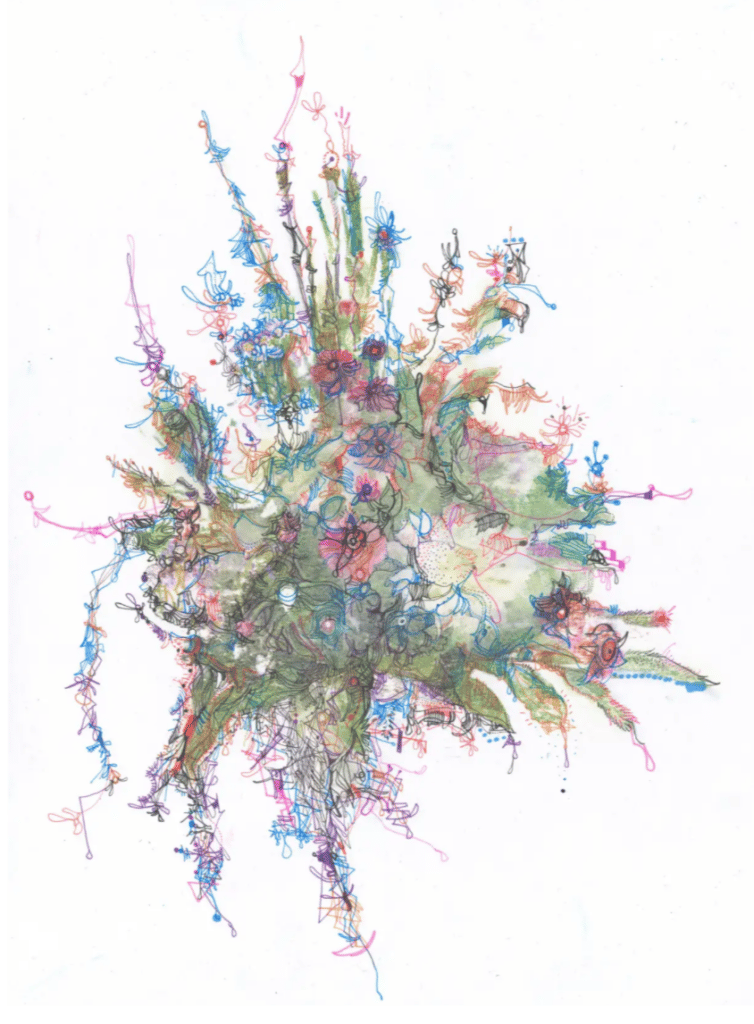
Michael Alan, Serenity
It’s this part of life that I understand. This unexplainable, screaming, over-ignored, oddly unattainable, key ingredient
that connects our whole entire existence. Some people try to call it Jesus, or robots. I just draw it, paint it, walk in it. It’s the
biggest part of life. Everything else is just mundane or some form of activity. The whole meaning of life is unexplainable
and this is actually what I understand and feel connected to.
It can make you feel that you’re “alone” because you feel you are connected to something so unreal. Everything else is so
systematic and you feel so removed, so far from it, you might just see the present.
Art Is Freedom!
A gift just appeared in my studio. I looked down at my floor and there appeared to be a really stern, iconic painting, fully
formed by me randomly. Unconsciously piling cut-ups of old drawings on top of each other. I didn’t plan on this being a work. I just looked down and Boom! These random five different drawings lined up on their own to create this super strong, transgendered, transnational, super model. It all started today. The pile included varied parts from a bunch of different years of work from 2007 to last night.
Time = delete

Michael Alan, Blue Skull Mind Chatter / Based on the Cellphone
Our minds are so random I wish we could see the captions and cartoons of our fellow commuters. There’s a part of my mind that I’m able to access daily. Usually during the second hour of working in the studio or sometimes it’ll just be at home. It’s not a zone, I have zones but it’s like I’m able to enter this other place. It almost feels like the place not before death but the place on the edge of everything.
It’s a place where through my body “I” am able to turn everything into anything. “I’m” able to problem solve. I see moves before they happen. I can just see everything. It’s not just a clarity, or speed, it’s because the “I” is gone and all is the now. The watcher sees things that don’t really exist at normal times when the ego can push them away. The watcher has to preplan, plan, triple plan and quadruple plan at the same time. I have planned the rest of my work and research to get to this place as a major part of my work process, leaving the “world” the actor on the stage, the “Michael Alan” to float next to my body.
Art Is Freedom!
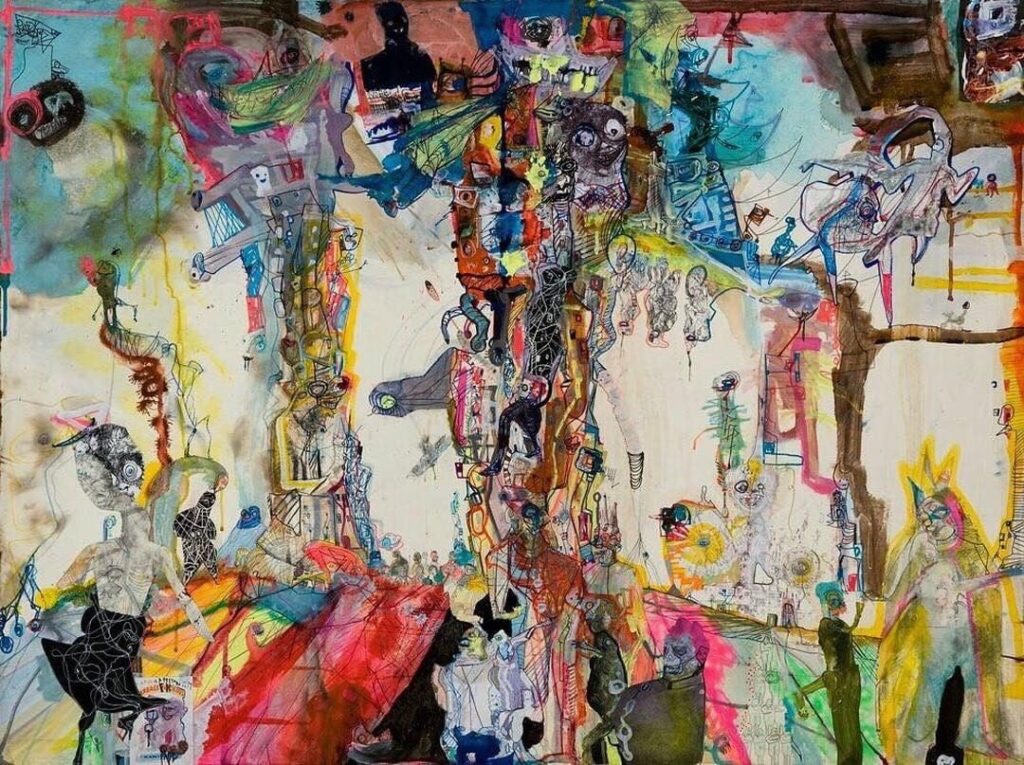
Michael Alan, Faded City
Compose Yourself!
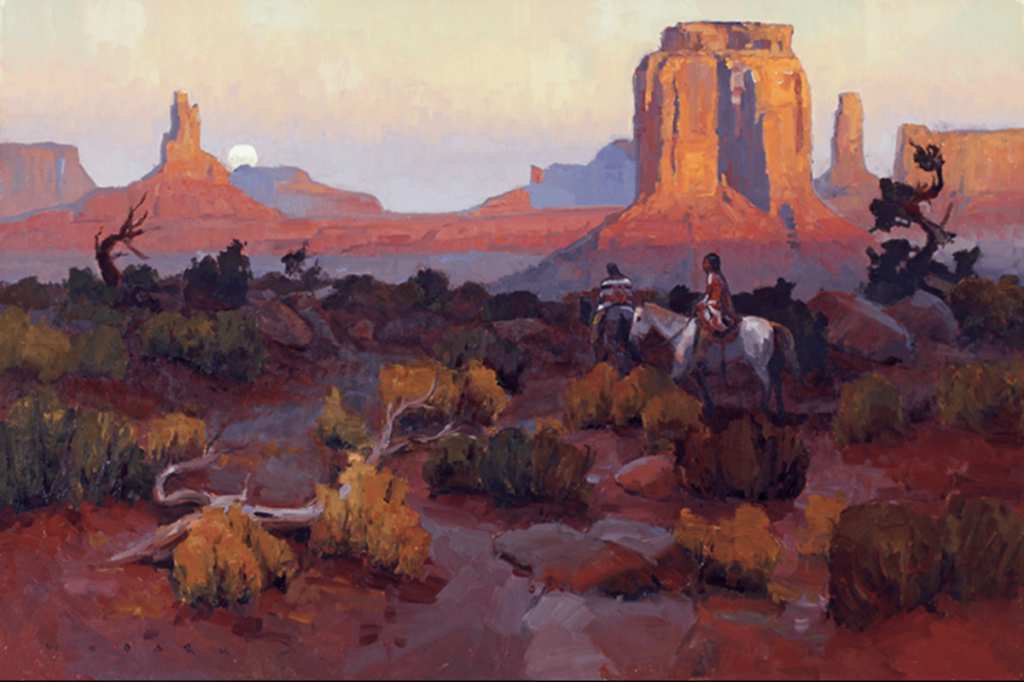
Jim Wodark, Moonrise Spirit, oil, 24 x 36 inches
Composition is one of the least intuitive aspects of painting for the beginner to grasp. For some artists that means working from an “armature” or complete underlying geometric structure, right from the start. For others, it means balancing relationships between shapes, sizes, placements, and of course color, on the fly.
Artist Jim Wodark says painting your canvas with color before nailing the composition is, “like trying to spread pretty frosting on a half-baked cake. No matter how good the frosting is, the cake isn’t going to hold up … and you won’t be satisfied with the outcome.”
In the painting Moonrise Spirit (above), Wodark creates a satisfying composition that manages to dynamically overlay two or three compositional techniques. Wodark balances dominant and subdominant forms (the close and large rock formation on the right and the more distant, smaller one on the left), patterns his foreground, and creates a cohesive path for the eye through the work. Finally, he draws us deeply into the pictorial space using a series of three points of interest. These are three light-colored objects arranged in a zig-zagging line that begins in the left corner of the foreground with the dried tree branches, continues with the white horse in the middle ground, and then carries us all the way back to the full moon rising in the distance. It’s a seemingly simple yet very effective layout.
Wodark explains the basis of strong composition and demonstrates his process in an instructional video called Composition for Painters. It’s a deep dive from a master of this most elusive aspect of the art.

